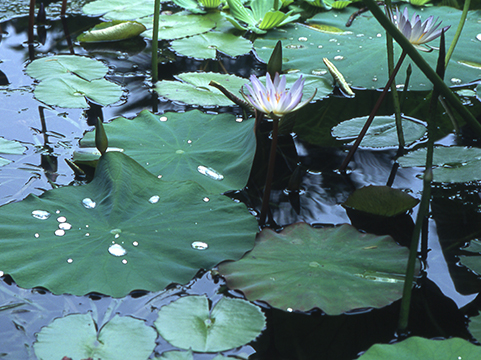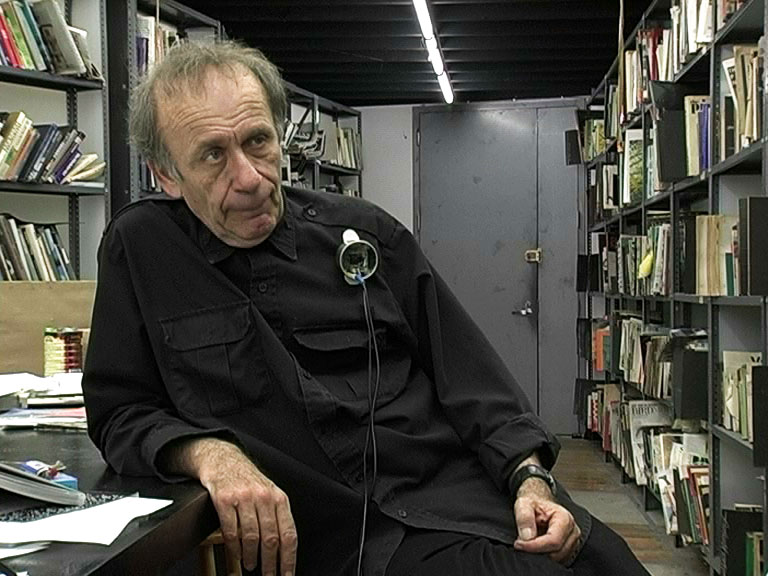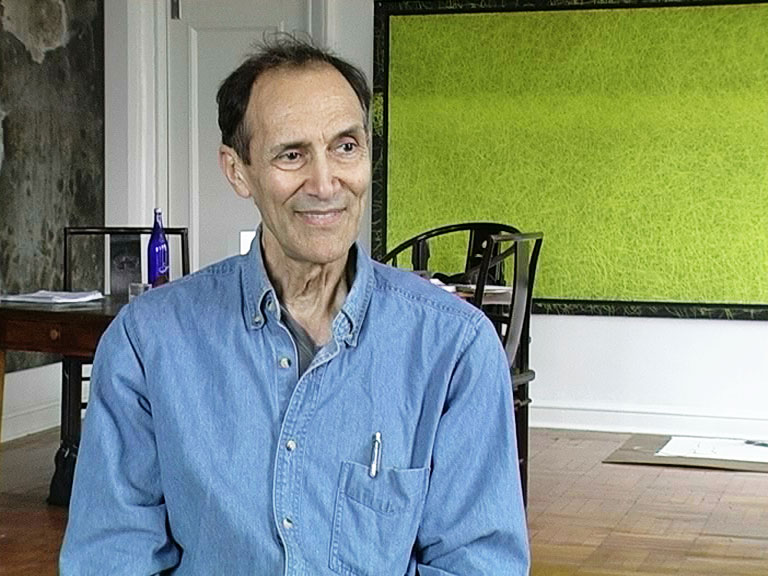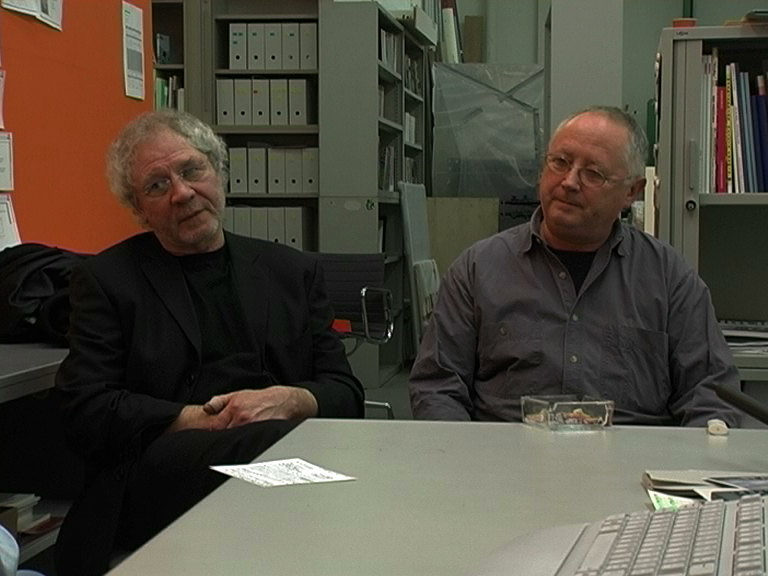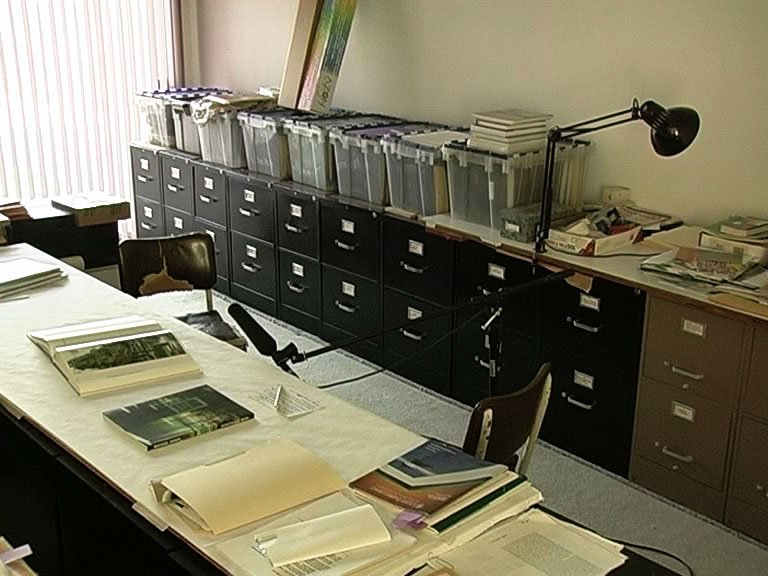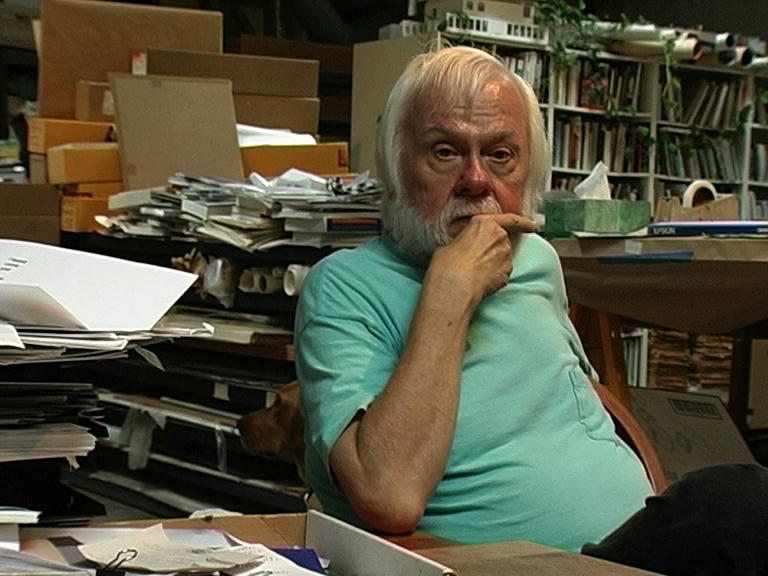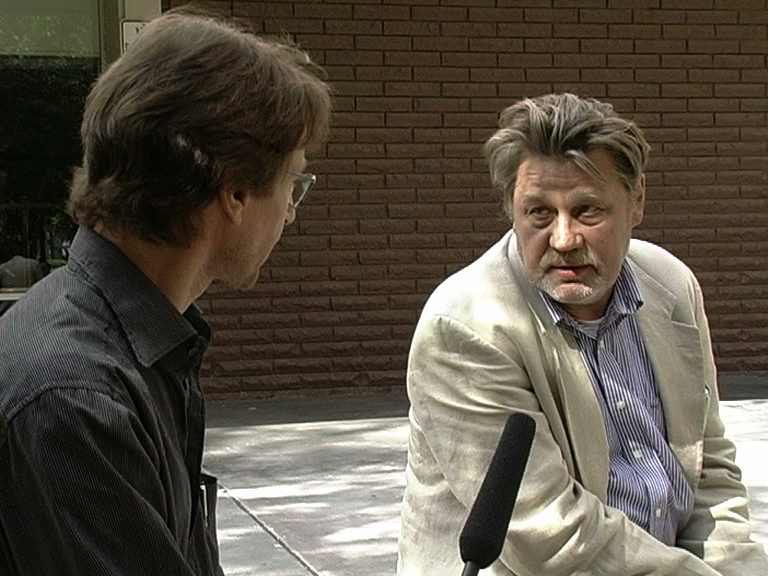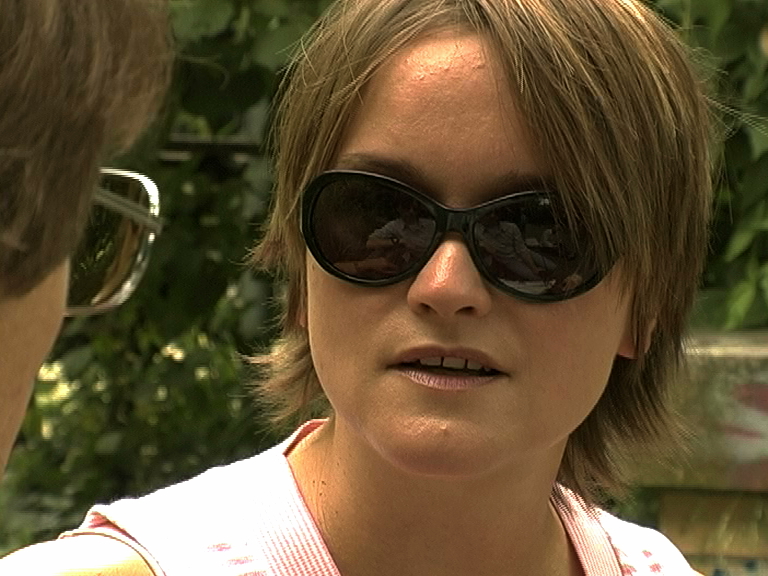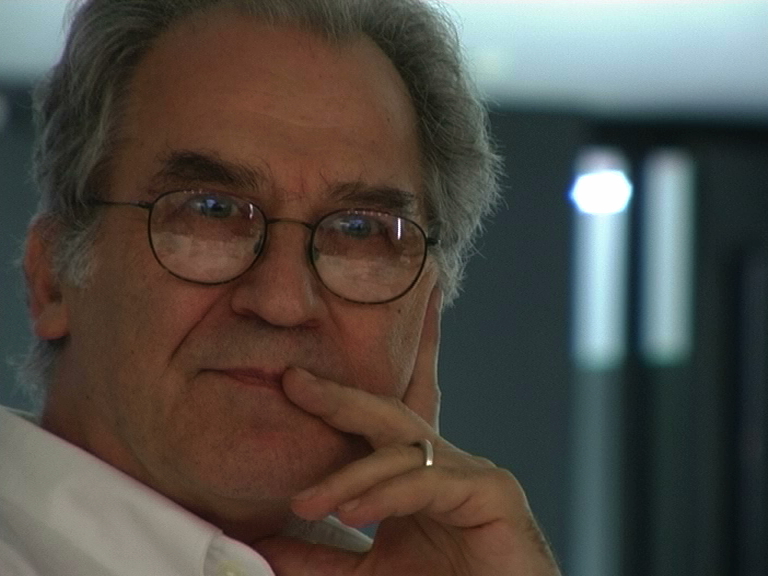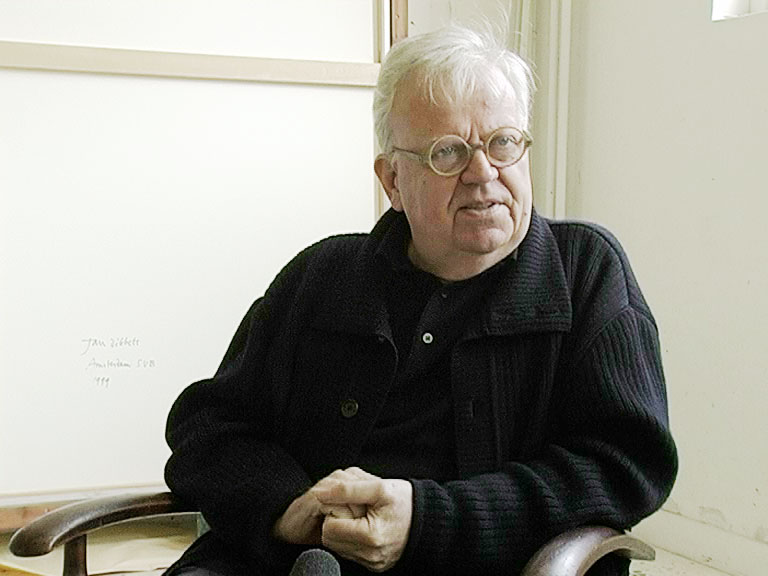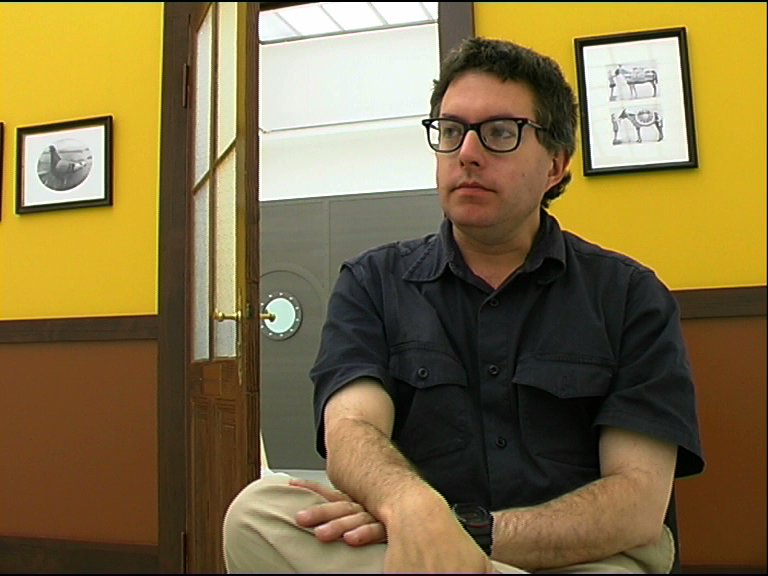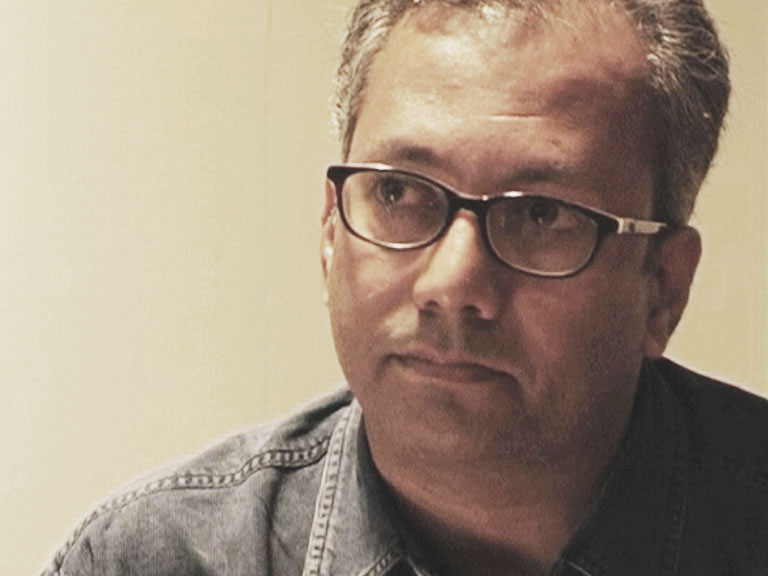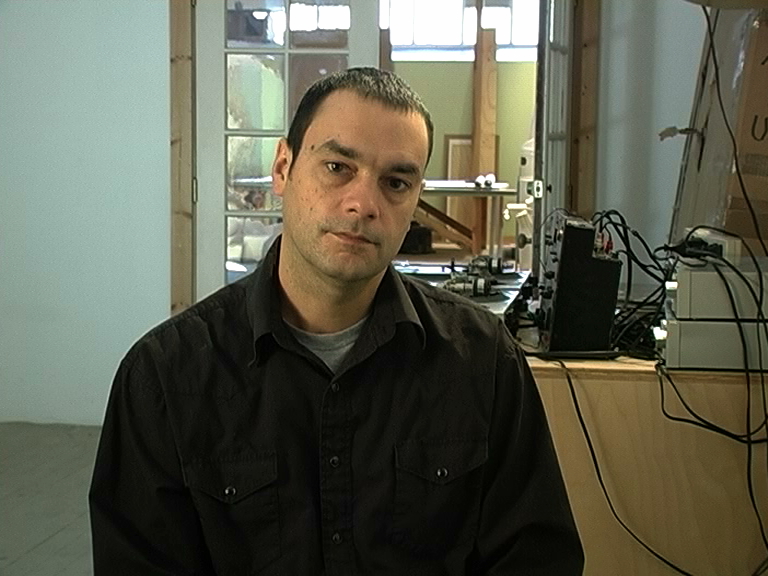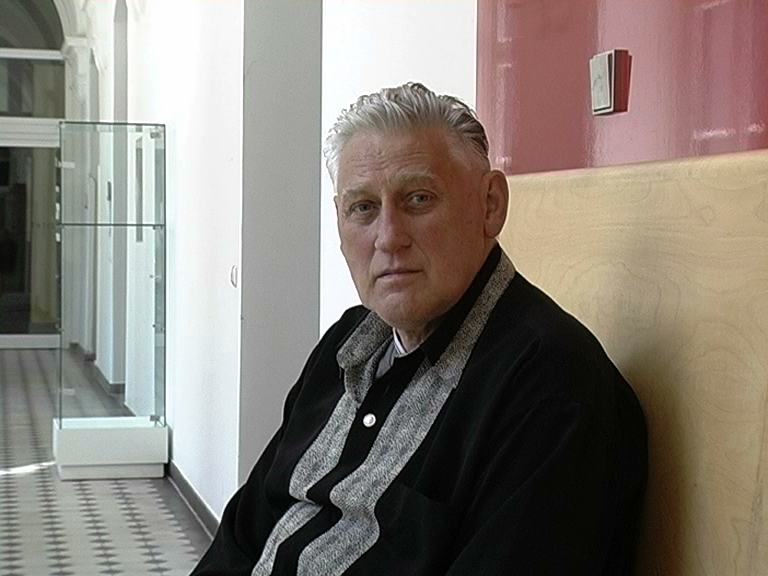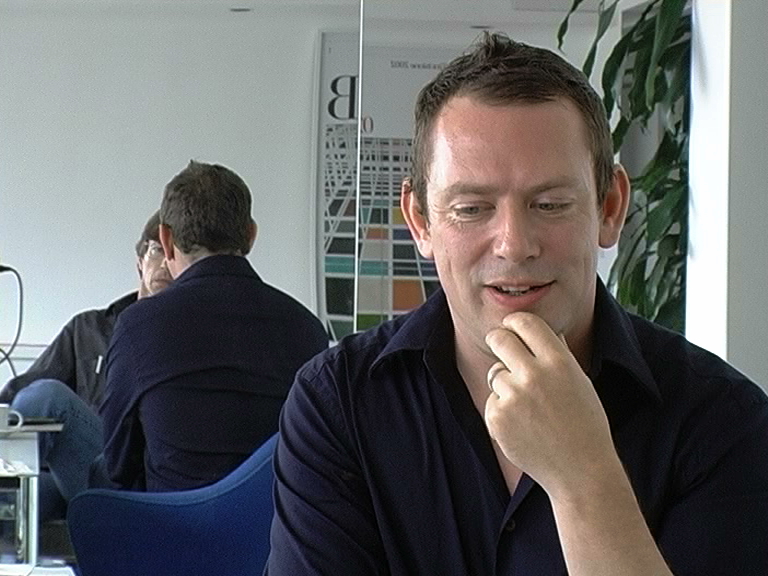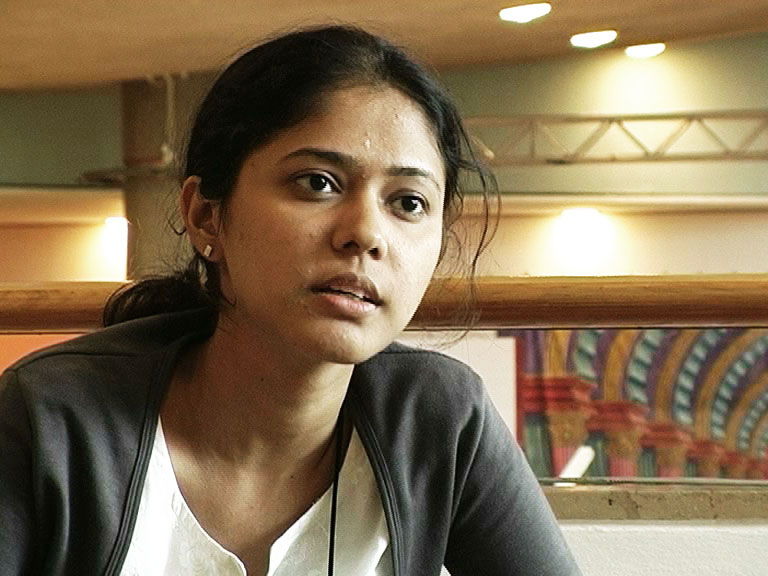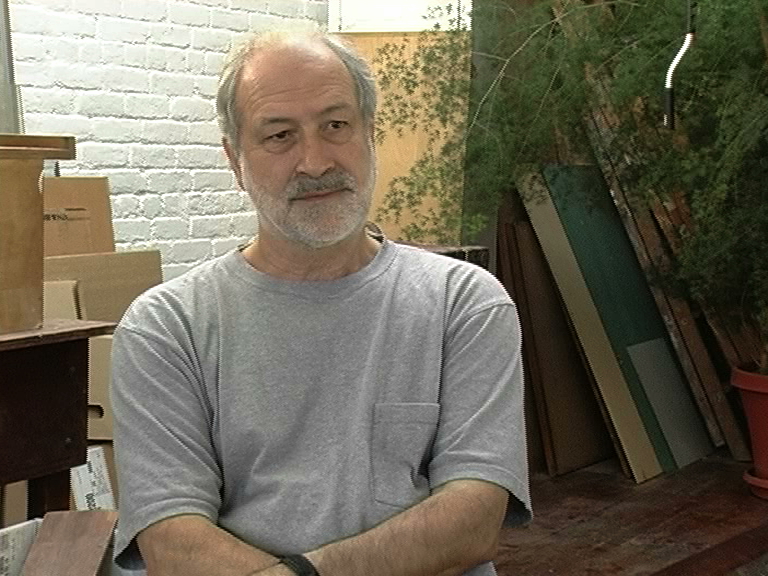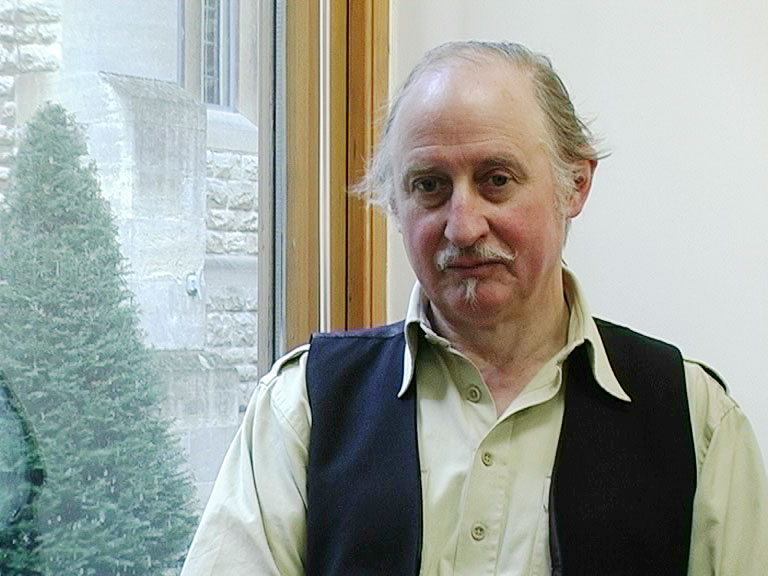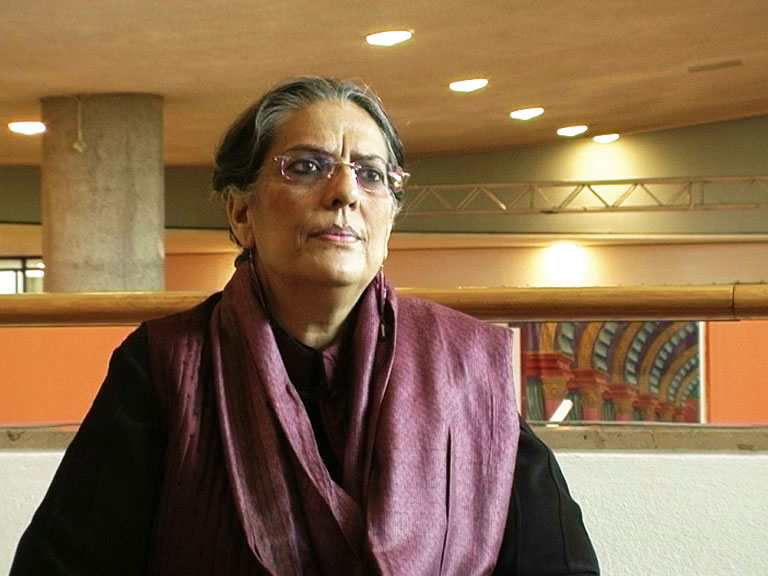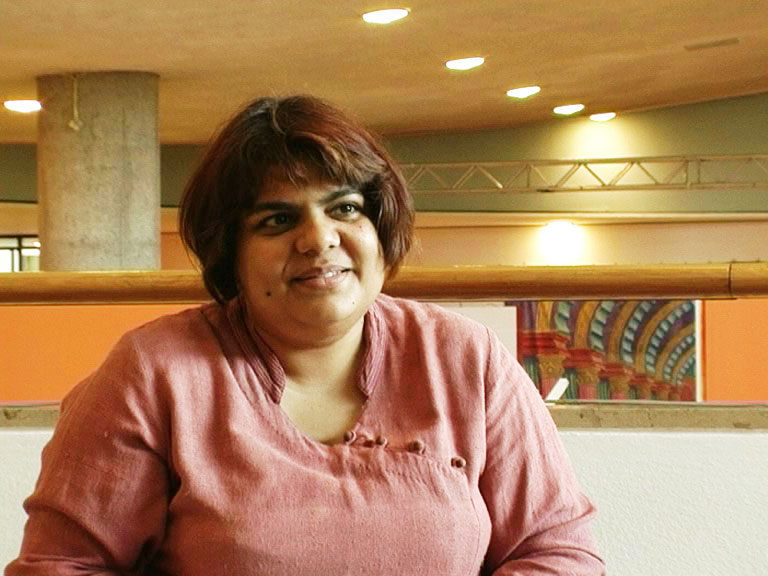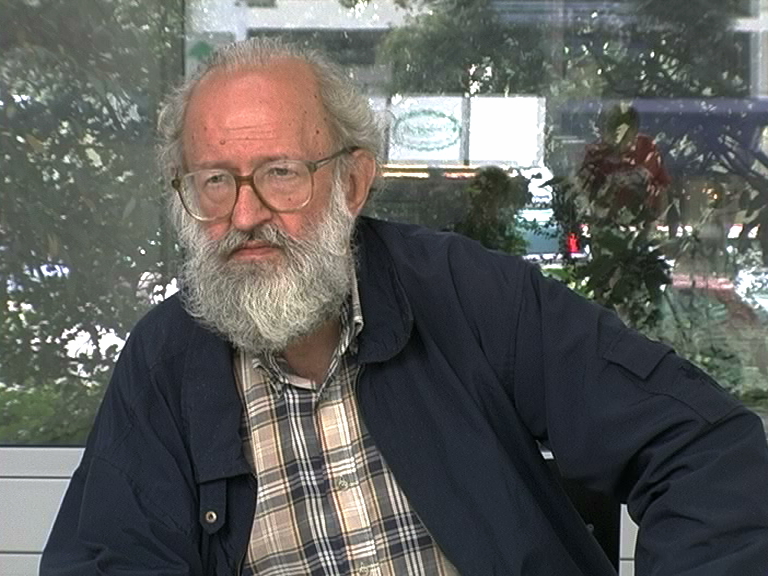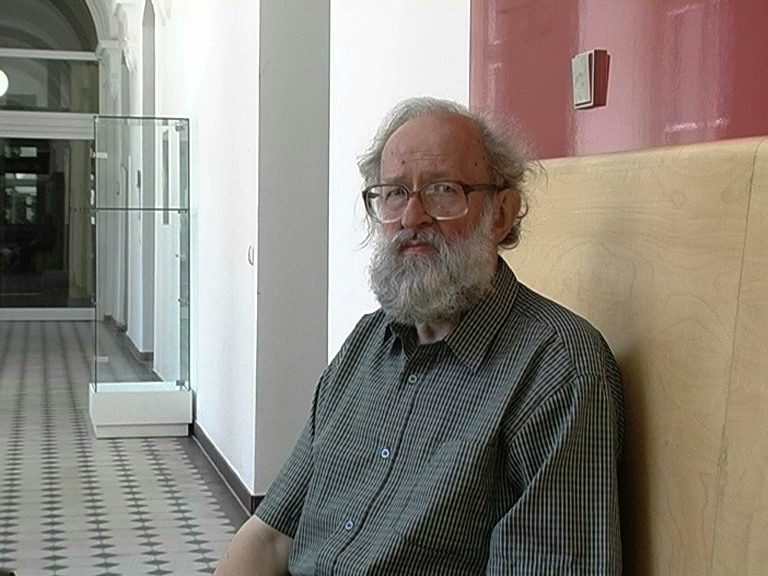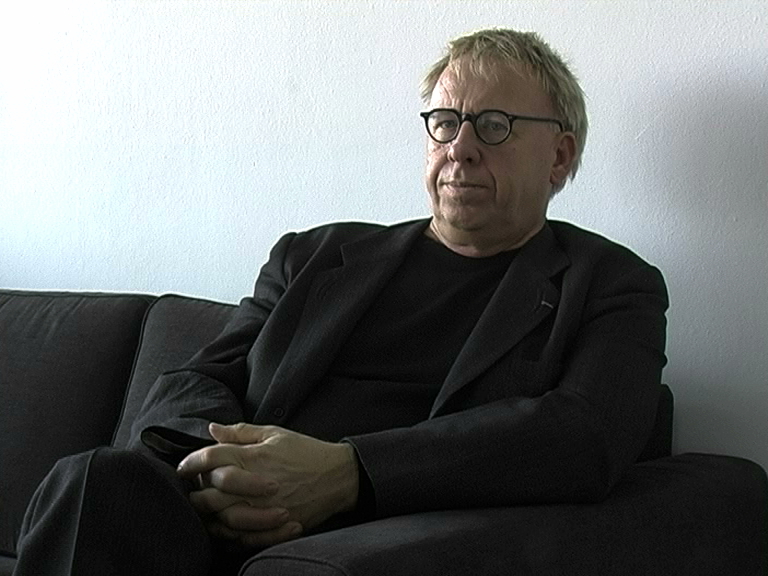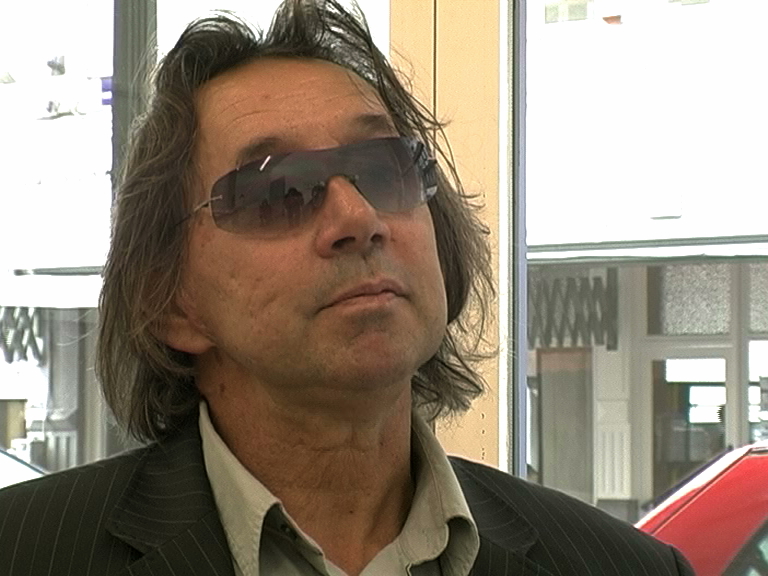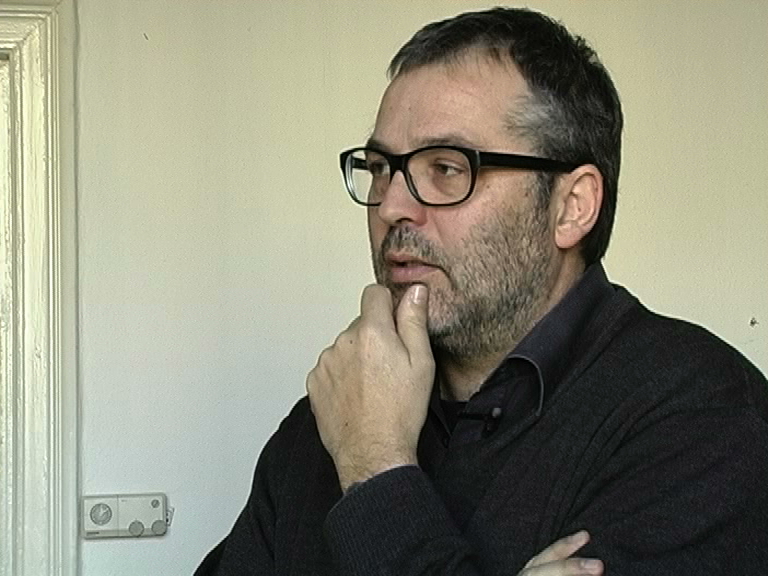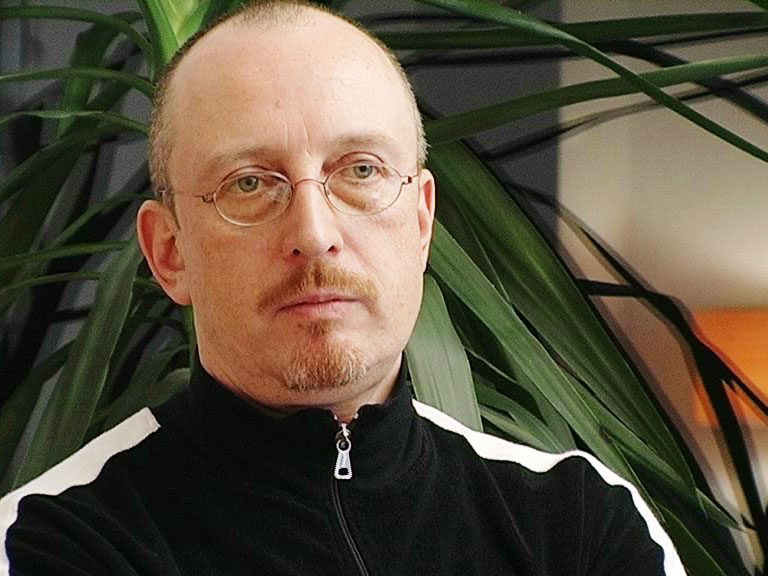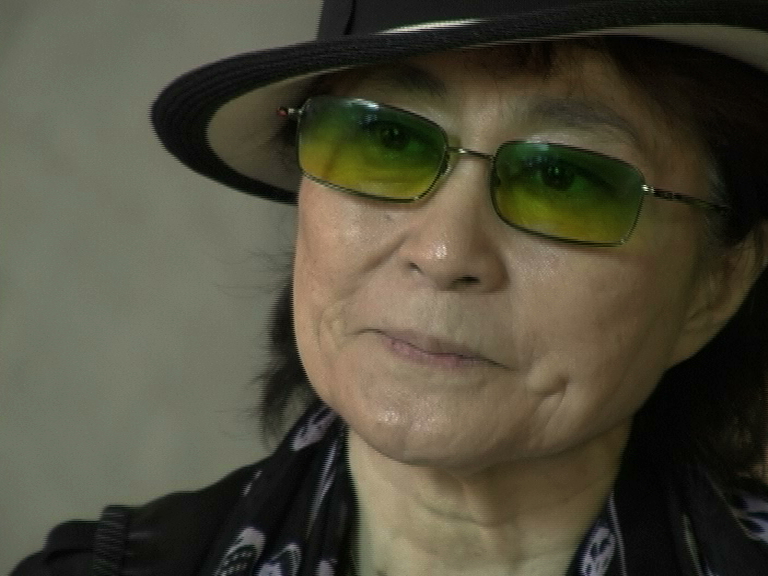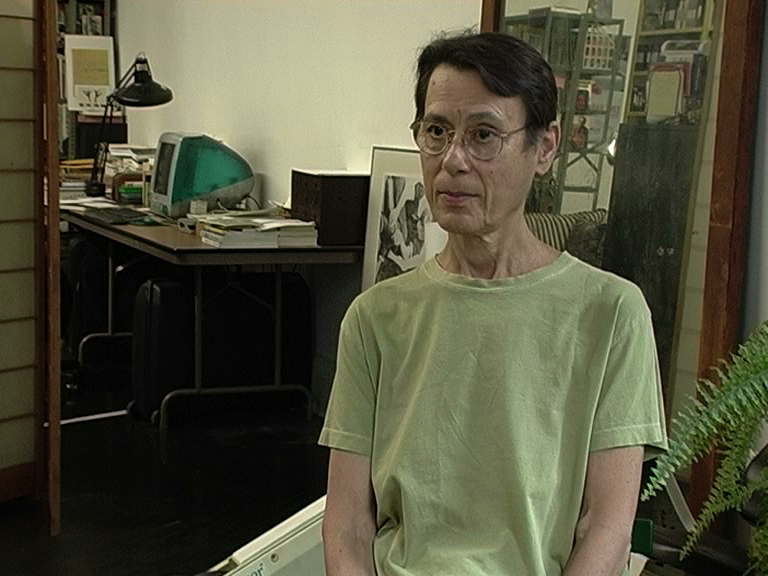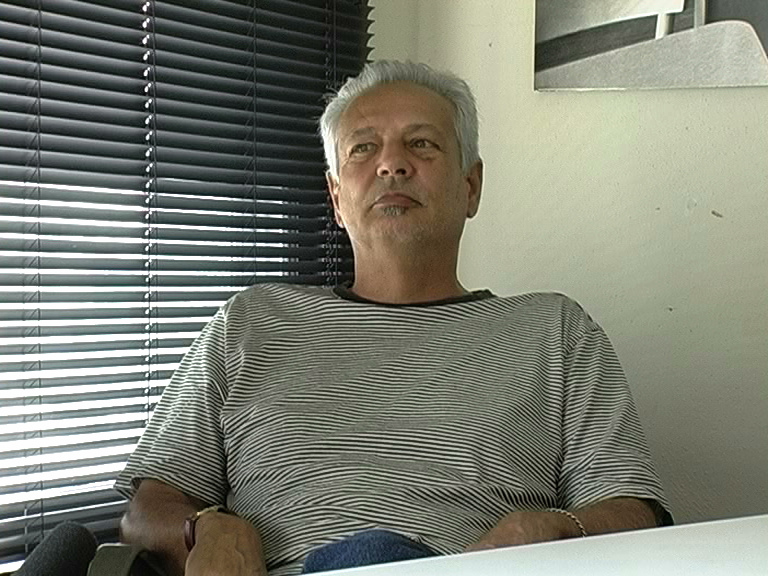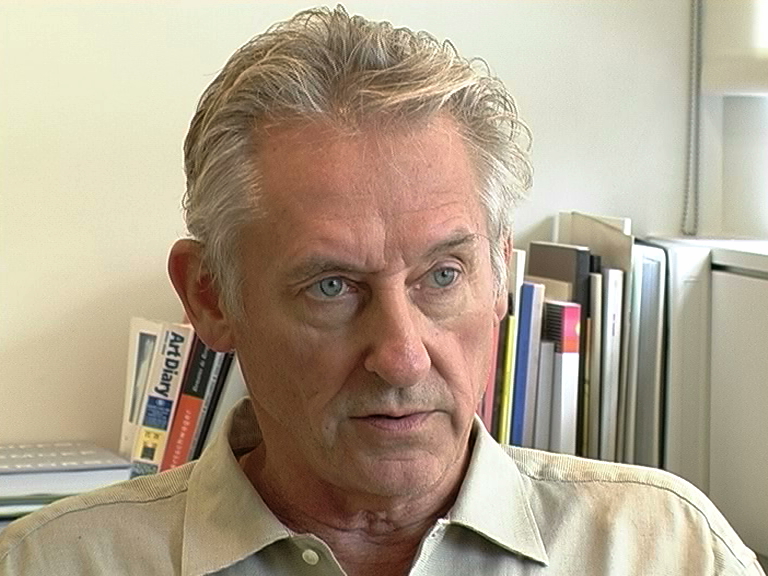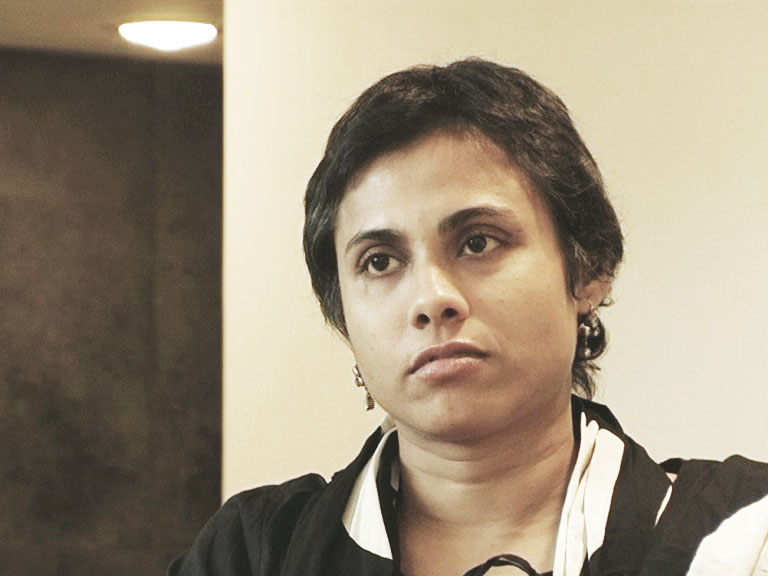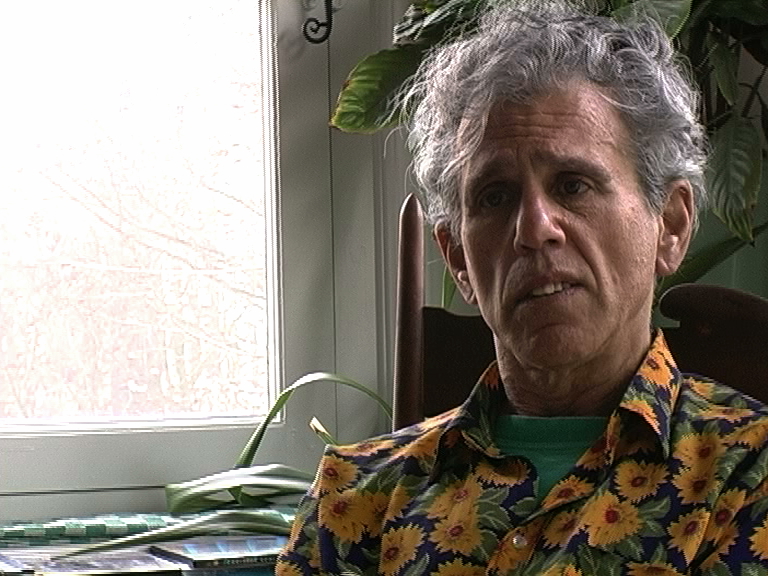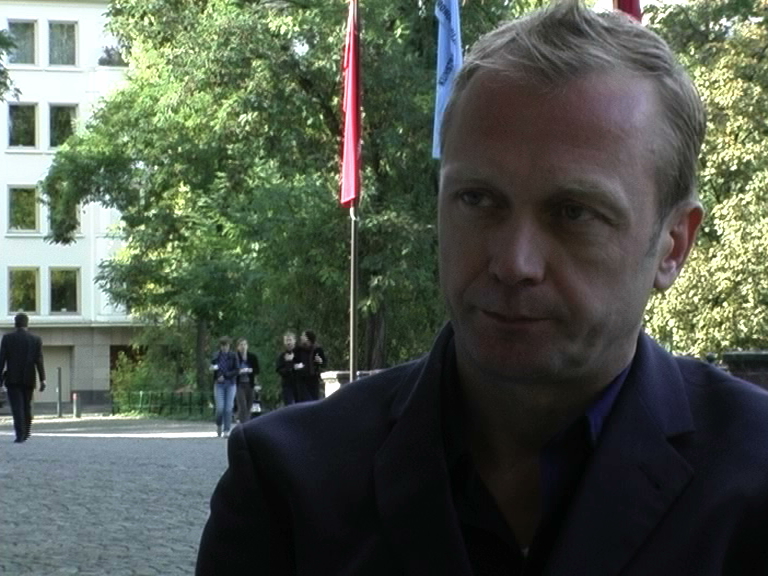S.R.: My interest in your work was really strongly focused on this two, at a first glance, different practices. First I read about your famous “Al’s Café” and “Al’s Grand Hotel”. We see the image of the Café in your back and the other practice was strongly literally oriented it was taking books like ”The Picture of Dorian Gray” and developed a specific kind of personal reproduction in artistic fields and maybe you can say something how it came that you have these different practices?
A.R.: Well there was always my own nature is not to repeat myself. I don’t like to live in the same place all the time, I don’t like to do the same things all the time, and so as the work developed, I did “Al’s Café” and “Al’s Grand Hotel”. I was always conscious of doing other things at the same time. So when I was doing “Al’s Café”, even before I did ”Al’s Café”, I was doing photo works, so I did 23 pieces, 24 pieces, the little books that came out, very much, you know, related to Ed Ruscha’s books, certainly influenced by Ed Ruscha‘s books. So I was beginning to work with photographs as material at the same time that I was doing these kind of performative installations. Although at that time they were called “environments” not “installations,” and the word performance was used with other artists in L.A. like Chris Burden, Paul McCarthy and poeple like that. Now it’s kind of become all part of you know the same era in different terminology.
But when I was doing those works I was simultaneously working with photographs and putting these photographs together in kind of narrative sequences and so I would be working on these enormous projects. It took six months just to build the Hotel for instance, and so, when I would do a big project like that, then I would switch off and do something that was much quicker, so that I could develop my ideas quicker and at the same time expand the practice so that I wouldn’t be pigeon-holed into doing this thing or that thing. I was always very conscious of not wanting to be kind of known for doing one thing. And because the work was about ideas anyway, there was no reason that ideas don’t function in any kind of a medium. That’s part of the program, is that when I started it could be this, it could be this, and so, you know, big giant environments with me, you know, the artist appearing in the environments. I was the chief cook and owner of Al’s Café. And I was the proprietor of Al’s Grand Hotel. So I myself as the artist was front and center in these pieces. But also the photo pieces, I appeared in the photo pieces also. And so my image was in these photo works and the sculptures. My first show here in L.A. was in 1969 just before the Café, and this was a big environment that was built in an office much the same as this one (points to his left) in a location on Sunset Boulevard. So that when people went to the gallery, they were given a car to drive to this office to see the work. And then, when you went into the work, it was in this old office building. But it was kind of in between sculpture and environment at that time, and it was very much about location. Location has always played a role. It’s the ideas that’s where inside of these forms and not the forms itself and so the location of Al’s Café, the location of Al’s Grand Hotel were very different, but very important. Al’s Grand Hotel was on Sunset Boulevard in the middle of Hollywood because that’s where the motels, the restaurants and the whole tourist industry is. Al’s Café was in a little out of the way part of L.A. and it functioned as a small café. But the location was one of the key ideas and that was also in the very first piece that was in the office on Sunset Boulevard. Location was the subject of the photo works, so the book’s 23 pieces, 24 pieces were about location and were photos of locations in and around L.A., different subjects each book, but basically about locations. The addresses of each photograph were listed at the end of each book. That’s open to any kind of interpretation, material-wise and so I always tried to maintain the process of doing different kinds of works simultaneously.
S.R.: You’ve already touched some other points I wanted to ask in the next questions, but maybe you can say a little bit more about the context, the urban context of Los Angeles for you and your work. Which role does the urban context of Los Angeles play for you and your work?
A.R.: As I indicated a little bit before that in the early years when I was getting out of school and starting my own work, I was fascinated by L.A. as a subject, which I think is true of a lot of people who come from somewhere else to the city, from another part of the country, particularly from the Mid-West, that the city in its vastness and its uniqueness becomes either an overt or a kind of peripheral subject to a lot of peoples’ work. Coming from Ohio, I grew up in a suburb of Cleveland, and Cleveland is an industrial city, so coming out here with this suburban-urban atmosphere and then the sheer ability to explore the whole place, you can’t help but be fascinated by it. And so I think that a lot of the early work is a pure fascination with what L.A. was at that time and to some degree still is.
S.R.: You were already talking about your photographic works and I was – I’m still interested in this what Allan McCollum in his text for this catalogue was writing: His empty landscapes, empty motel lobbies and empty spaces. He wrote: “sites where stories are about to happen.“ How do you, how did you come to this point to use these images? What did it represent for yourself?
A.R.: It’s the fascination with narrative which, I’m very influenced by movies. So it’s a combination of influence of movies and then attempting to make my own narratives and then looking for these narrative situations in everyday life. As the photo pieces developed, they developed more and more into a way to tell stories, but of course non-linear and collaged stories if you will. There is a point in the photo works where the text then enters the work, previously they were almost always, not always but 90 percent, just photo works, but then I began to add text. And the more that I began to add text, the further I got into constructing a variety of narrative ideas. That narrative interest then expanded into its primary form, literature and or historical form literature. It just kept growing, and the interest in incorporating the idea of writing into the work developed at that point.
S.R.: This is very interesting for me and brings me to the second set of questions which is going a little bit about references you take to the world outside, the world in general and some other artistic practices when you were talking about the narrative. For example Joseph Kosuth tried to position something like an exclusion of a narrative for conceptual art. How did you see that at that time, at the beginning of the 1970s – this gesture of exclusion, was it relevant for you or was it just something like an attitude of a New York artist?
A.R.: We all showed together and we showed, Joseph and myself and John Baldessari, and many other people showed in one gallery here, and the New York artist came out here. I met all of those people at the same time, and Dan Graham and everybody else. So in my own development and particularly kind of coming out of a minimalist period, these two ideas in myself are very mixed because being totally influenced by the culture and the history of California, that’s the primary ground that I developed from. And so you have a very different sense of history and a very different confluence of influences because it’s an industry town. You have the Hollywood industry which permeates everything, and coming from Mid-West, I was fascinated with movies and so in my background is the culture of L.A. Which comes from a different perspective than a historical, much more kind of linear perspective of New York. And so in a way I kind of blended those things. But the kind of variety of influences that are in L.A. don’t exclude that, but maybe just take it as another part. I don‘t know…
S.R.: You already said that you were strongly influenced by movies, but I also took reference to some literary points in history. Would you say is it something like an influence – some people don’t like this term influence – or is it something like your taking up communication to the history of movies or the history of literature? How do you put it yourself or is it just something like doing it every day, going to a movie and reading literature and then it’s kind of a habit in your work? How do you see this?
A.R.: I’m not quite sure I understand the question a hundred percent. But do you mean how do these influences wind up in the work? How do they become part of the work itself or…
S.R.: Yes, maybe you can say something about these two works, where you took these literary references, for example “Dorian Gray”, the other was “Walden”. How did you come to this interaction?
A.R.: There are very different ideas in each one of them, but it was a way to work with books, that books being an object in the world in the same way as in the other artwork, and artworks being primarily concerned with objects or some kind of representation of something there, that I wanted to incorporate these other forms and bring them into the context of art making at the time and so that interest in narrative of course leads to books, and so the first one was “Walden” and I had read the book as a teenager and I was influenced by it and stuff and so that I wanted to find a way to turn these books into objects without changing the nature of that book object itself, and so with “Walden”, “Walden” is a discourse, it becomes a personal discourse with me ten or fifteen years after I’ve read the book, I sit down and I have a personal dialogue with Thoreau about these ideas and the book as I’m copying it out. So by engaging in the kind of nature of that book, this kind of dialogue and then at the end of the dialogue there is a handwritten copy of the entire book, so it becomes an object. And then it was turned back into a manuscript, so that one could see the time that this dialogue took place in. It took me about three months to rewrite it. And that was everyday sitting down at the desk, writing, copying each sentence, thinking about it, whether it still made sense to me these years later. All summer I had this dialogue with the book “Walden”, with Thoreau, and at the end the book is there in the same form that it exists for everybody else, but it’s also become a personal handmade artwork and transferred the book back to its manuscript form. So that’s one way of taking a literary thing and turning it into a visual or conceptual thing, and then after I completed that, I liked the idea, I liked the work and so I began to think what/where that would lead to. A couple of years later I saw the movie, “The Picture of Dorian Gray,” which is a fantastic film from the late 1940’s, and that intrigued me so… and out comes later on, after thinking about it for a year, out comes the idea that I could do the same thing with “Dorian Gray,” because ”The Picture of Dorian Gray” is a book about a painting, and so I could turn the thing inside out again in a different way than Walden, but it presents the book in its entire original form. The story is there, you could stand in the gallery how many days it would take you to read it, but the book is there, but it’s also a series of canvases hanging in the gallery that makes it work, makes it visual work. So it sets up the dialogue that is a 50/50 dialogue of reading and looking, and this is the dynamic that then has gone on and on and on up until today.
S.R.: So it’s in the medium of painting, but it’s taken literally, so you have to read the painting?
A.R.: You have to read it and you have to look at it because when you look at a painting, you don’t read it like the page of a book, when you experience a painting or sculpture or any work of art, you don’t take it all in at once. You look at the entire canvas, and then you go in and look at details and read it in another way. But that sets up a barrier to that. You do that at the same time that you read the details. You’re constantly going back and forth between these two experiences.
SR: Can you say something about what is the aim of your artistic practice?
A.R.: You would go back to the art-life dialogue. That’s where I come from. You can go back to the beginning of the century – for that one. The history of that road of art – that tries to connect and, in my case, make the artwork disappear and the life take over. It’s an attempt to have the viewer… to pass on that experience to the viewer. The viewer is not a passive person, sitting there and looking at something, but it’s a person who is actively out in the world doing something. in the same way that he would do outside of a gallery. The emphasis has always been – whether it’s a café or whether it’s the Münster ‘97 guided tour – it’s an attempt to make real life – but one notices.
S.R.: This is a specific approach in the field of Conceptual art. Do you think that the innovation of Conceptual art, the break with the tradition of art. Is it possible to renew these paradigms, are they still in function? What do you thin? What happened in the last 20 or 30 years?
A.R.: I think they are continually renewed. You mentioned Sam Durant; he is a full generation under me, but these ideas have been renewed through each generation and are still very much a part of the dialogue. I think you can see it in all younger artists. It changes obviously, but the initial ideas still have relevance to each generation that comes along. It’s not isolated from previous historical points … like I said, that I and my generation got to it through previous generations, and it was crystallized at a certain point. Now that period of crystallization has gone off in many directions, but it still remains part of that dialogue in lots of ways and has influenced all parts of art making.
S.R.: Last question: What is your ideal typical daily work as an artist?
A.R. Coming down here and sitting around. There is no program day-to-day other than going to the studio and doing something. The contact with the studio is the point of reference. Some people don’t need studios. I just happen to like to have a little place away from where I live. So that when I go there I go to work. But that definition of work is completely open and I make it up different every day. Like I say, I do all kinds of things, so if I’m working on a project that’s taking place in some factory then I go and work on that and sit around here and read the newspaper. There is no specific program per day. It’s contact with this place that functions as a kind of a studio. But it’s not a traditional studio-studio. It’s a place to come to that has whatever I need around me to make me do something.
S.R.: No preference on drawing or taking photographs.
A.R.: No. It all gets mixed up every day. I do a little bit of this and then switch over and do a little bit of this. Then I go to the movies and then I’ll come back and do something else or go for a walk. Obviously if I’m on a deadline and have to finish something. then I do that, but, left to my own devices, it kind of gets put together differently every day.
S.R.: So thank you very much. These were the questions. But as I said before if you have to say something that is very important to you that come amy be from the heart or you think it‘s necessary to say now, feel free it‘s your time.
A.R.: We touched on a lot of things which could be gone into much more. There is nothing in particular. The thing that is more about me is this fact that the work is a mix of the culture of L.A. and the fact that I live in New York also, and have been living off and on in New York since 1970. It’s really rather unique for me to combine these two influences, and growing up in Cleveland which is very close to New York. There’s roots there. Going to art school out here and developing and having influences by all the artists that were beginning to be known out here then. And the unique position of L.A. in the art world, historically, and the things that happened out here which, of course, at a certain age, these were huge influences. But then they also migrated to New York, and the fact that I don’t stick to one method of doing things. So you have lots of things that all come together in different ways which is what makes up what I do whether it’s words and pictures, and reading and looking, or New York and LA. All the influences that come out of those things, and the idea of not wanting to be restricted to one way of doing things. There is no reason why I can’t draw and take photographs and do installations and do videos and do whatever else I want to do because the core is about ideas anyway. And it’s ideas about the world. I always considered myself a realist, and I still do.
S.R.: Maybe this is nice last word.
Nachgespräch
S.R.: … (talk about the objects in his studio)
How did you collect all these things? Did you buy them or did you get them as donations? Because it’s really the whole environment of a café.
A.R.: Well, part of it was my own collections of stuff, but also at the same time that I did that I was living with a number of artist in LA on an abandoned amusement pier. On this pier was old coffeeshops, old restaurants, old snackbars, old rides and games, just everything was there. At night we would go around and just take everythings and put it in the car and drive it away when they weren’t looking. Then I made the Café out of this environment I was living in because they were just going to destroy it; it was an old amusement pier from the 20s. They closed it down and they allowed artists to rent studio space there. So we all lived on this abandoned pier. It was a fantastic environment. At night you get on your bike and ride through all these caves where the little cars used to go and took people. We lived in an old restaurant. For a year and a half we were able to live on this and then they blew it up and destroyed it.
S.R.: …the café was open?
A.R. One day a week. It took me all week just to replenish it, to go and get all that material for the dinners… I would have to drive from the desert to the mountains to the beach to downtown LA. I had a VW van and I would just drive around and fill it all up with stuff and bring it back here and get it ready and then start over again. It was a very time-consuming occupation.
S.R. So that means that you also sold the pieces?
A.R. Yes. You don’t see any of them in those pictures. There was dinners, there was a menue, and you ordered from the menue. There was waitresses that took your order; I made “food”, but the food was assemblages, but they looked like things that you get on a plate. So people could have them. It was a full-time job. That’s why it only went on for so long, then I had to go off to other things.
S.R.: I can remember Allam McCullum took also the reference to “food“ of Gordon Matta-Clark.
A.R.: It was around the same time. It was a little bit before. And also it was a little bit after Oldenburg’s “Store” although I wasn’t really aware of Oldenburg’s store.
S.R.: I think it’s a different thing because Oldenburg was always more oriented like these pre-fabricated objects.
A.R.: He made sculptures. I made assemblages more related to Kienholz and George Herms, Bruce Conner etc.
S.R.: This is more performative open, it’s more a social thing.
A.R.: Exactly. It was part of it was a social idea. In Los Angeles where artists don’t ever get together and meet, it was a desire to create a place where artists could get together and meet. In New York you had art bars and everybody is close to each other and you see each other on the street, it was not an issue. But here, once you get out of school – at that time – there was no central way for artists to gather at a bar and talk. There was a social aspect to it, for sure, and that’s true of the hotel also, that it really was a part of L.A. and that it needed a social gathering.
S.R.: How was the hotel organized? Was it really a place to stay for a weekend or was it just a party for the weekend?
A.R.: You could stay for one night or two nights. It was open on the weekend.
S.R.: You had really customers to stay there.
A.R.: Yes. It was a functioning hotel.
S.R.: But you didn’t do it alone, that would have been too much work…
A.R.: Well, I had some assistants, but I more or less did it alone. But that’s another reason it was only open on the weekends because it takes the rest of the week to get it all ready for the weekend. People rented it for parties. We had fantastic private parties there, but that was separate from its normal weekend function. Every weekend was kind of like a party anyway, because people would come – whether they were spending the night or not – they would come to see their friends, have some drinks, listen to music. But then they could spend the night. The rooms were always booked.
S.R.: But it was not expensive?
A.R.: No. It was the same price as any other motel in the neighborhood. That’s why the neighborhood was important; that the cost of everything was equivalent to what was around it. There was no difference as an art work. It was just the same as any other motel. Those things really always played a part the location of what its context was, always played a part.
S.R.: How do you consider the role of the documentation of this project. This image in your back is very representative for the café. This more and more complex idea of the hotel. Is there any kind of documentation like films or something like that?
A.R.: No, unfortunately there is very little. It was before video and there was no film taken. I should have taken 8mm film or something. The only documentation is still photographs. Although there is a soundtrack that was made, because my friend, a musician and artist, Terry Allen, he played one night at the hotel. So I have an album that was never made or released, but it was recorded at Al’s Grand Hotel. So I have like a soundtrack and I have still images. And here is even less with the café, I have only still images. Terry wrote a song. There is also a song for Al’s Café, but there is no moving image, which is really too bad. But it was before the the technology of those things. Obviously film was there, but I wasn’t into it.
S.R.: Maybe it’s not so bad because sometimes the mystical effect of the documentation, photographs is also very strong. So the thing lives as an idea.
A.R.: This is true, yes, about the café.
S.R.: So we will see it?
A.R.: You wont see anything more than still images, but we have to make some kind of a presentation of it for the exhibition. Because it’s part of the work that we want to include in the show. I don’t know what we are going to do yet, but we have to make something.
S.R.: We are really looking forward to it.
A.R.: Well, me too. It’s a lot of work, as you know.



